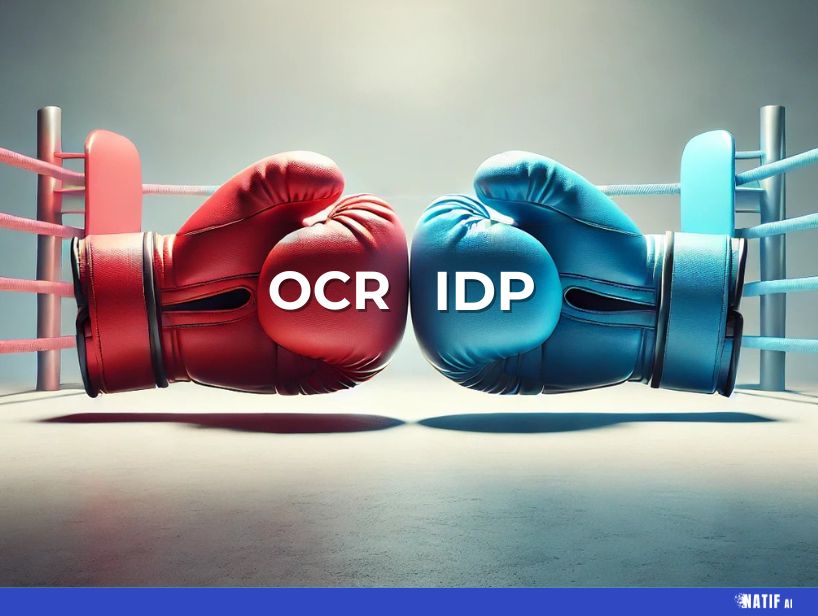Two key technologies in this area are Optical Character Recognition (OCR) and Intelligent Document Processing (IDP). While Optical Character Recognition converts printed or handwritten text into machine-readable formats, IDP leverages artificial intelligence to analyze complex documents and extract relevant information intelligently.
In this article, we’ll delve deeper into the differences between these technologies, discuss their practical applications, and help businesses understand which is right for them. We’ll also highlight how natif.ai bridges the gap with cutting-edge solutions.
The Role of Optical Character Recognition: Saving Time and Reducing Errors
Optical Character Recognition is a foundational technology for document digitization. It extracts printed and handwritten text from images or scanned documents and converts it into machine-readable data. This capability is vital for businesses aiming to enhance efficiency, improve data accessibility, and streamline basic document workflows.
Applications of Optical Character Recognition
Optical Character Recognition plays a pivotal role in:
• Invoice Processing: Streamline the capture of amounts, supplier names, and other essential data.
• Form Processing: Extracts information from forms, reducing manual data entry.
• Archiving: Converts physical records into searchable digital formats, preserving information.
• Accessibility: Makes printed content accessible for individuals with visual impairments.
• Workflow Automation: Reduces manual input across various industries.
IDP: Transforming Document Processing
Intelligent Document Processing takes automation to the next level. By combining technologies like machine learning (ML), natural language processing (NLP), and advanced Optical Character Recognition, Intelligent Document Processing goes beyond simple text recognition to extract, classify, and validate data from unstructured or semi-structured documents.
Applications of Intelligent Document Processing
Intelligent Document Processing is designed for complex workflows across various industries, including but not limited to:
• Financial Services: Automates loan applications and invoice processing.
• Healthcare: Processes patient records and insurance claims.
• Legal Sector: Analyzes legal documents for faster research.
• Insurance: Handles claims and policy documentation efficiently.
For example, IDP can process multi-line invoices with varying formats, extract specific fields like VAT amounts or payment terms, and validate the data for accuracy. While these industries benefit significantly, IDP is adaptable to many other sectors that handle large volumes of documents, reducing manual effort and ensuring scalability as document demands grow.
Benefits of Intelligent Document Processing
• Automation of Complex Tasks: Reduces manual input in unstructured document workflows.
• Higher Accuracy: AI-powered data validation minimizes errors.
• Scalability: Adapts to increasing document volumes without additional resources.
• Integration and Analytics: Seamlessly integrates with systems while offering actionable insights.
OCR or IDP – Which Technology Should You Choose?
Choosing between the two technologies depends on the complexity of your document workflows.
Use Optical Character Recognition if:
• You’re dealing with standardized, simple documents like forms or invoices.
• Cost-efficiency and basic text extraction are your primary goals.
Choose Intelligent Document Processing if:
• Your workflows involve unstructured or semi-structured data (e.g., contracts, multi-format invoices).
• You need automation beyond text recognition, including classification, validation, and AI-driven analytics.
• Scalability and adaptability are critical for your operations.
Decision Framework: Which technology suits your company?
• Are your documents primarily structured? → Optical Character Recognition is the right choice.
• Do you require intelligent classification and extraction? → Intelligent Document Processing is the solution.
• Is scalability or integration with existing systems a priority? → IDP offers seamless integration with tools like
Elo or
Make.com.
The Role of natif.ai: Bridging OCR and IDP
natif.ai excels in delivering both solutions, enabling businesses to automate document workflows with unparalleled accuracy and speed.
Here’s how natif.ai stands out:
1. Advanced Optical Character Recognition: Achieves over 94% accuracy even for low-quality scans or handwritten text.
2. Cutting-Edge Intelligent Document Processing: Leverages one of the largest Large Document Models
(LDMs) trained on millions of international documents, ensuring precise extraction across diverse formats, languages, and industries.
3. Scalability and Speed: Processes documents in under one second, adapting effortlessly to growing business needs.
4. White-Label Solution: Integrates seamlessly into your workflows, allowing you to offer natif.ai’s technology under your own brand.
5. Flexibility in Integration: REST APIs and plug-ins enable smooth adoption into existing systems.
For example, a global logistics company using natif.ai reduced invoice processing times by 70% while achieving error rates below 5%. By deploying natif.ai’s white-label solution, they also enhanced their service offering without extensive development.
Conclusion: Choosing the Right Technology for Your Needs
Efficient document processing is no longer optional—it’s a necessity for businesses aiming to stay competitive. Whether you need Optical Character Recognition for simple digitization or Intelligent Document Processing for handling complex, unstructured documents, the right technology can transform your operations.
natif.ai offers both advanced Optical Character Recognition and state-of-the-art IDP capabilities, including a white-label solution that integrates seamlessly into your workflows. With one of the largest Large Document Models (LDMs) trained on millions of international documents, natif.ai ensures unparalleled accuracy and adaptability across industries.
Ready to explore how natif.ai can elevate your document automation? Contact us for a demo and discover the tangible impact it can have on your business.


